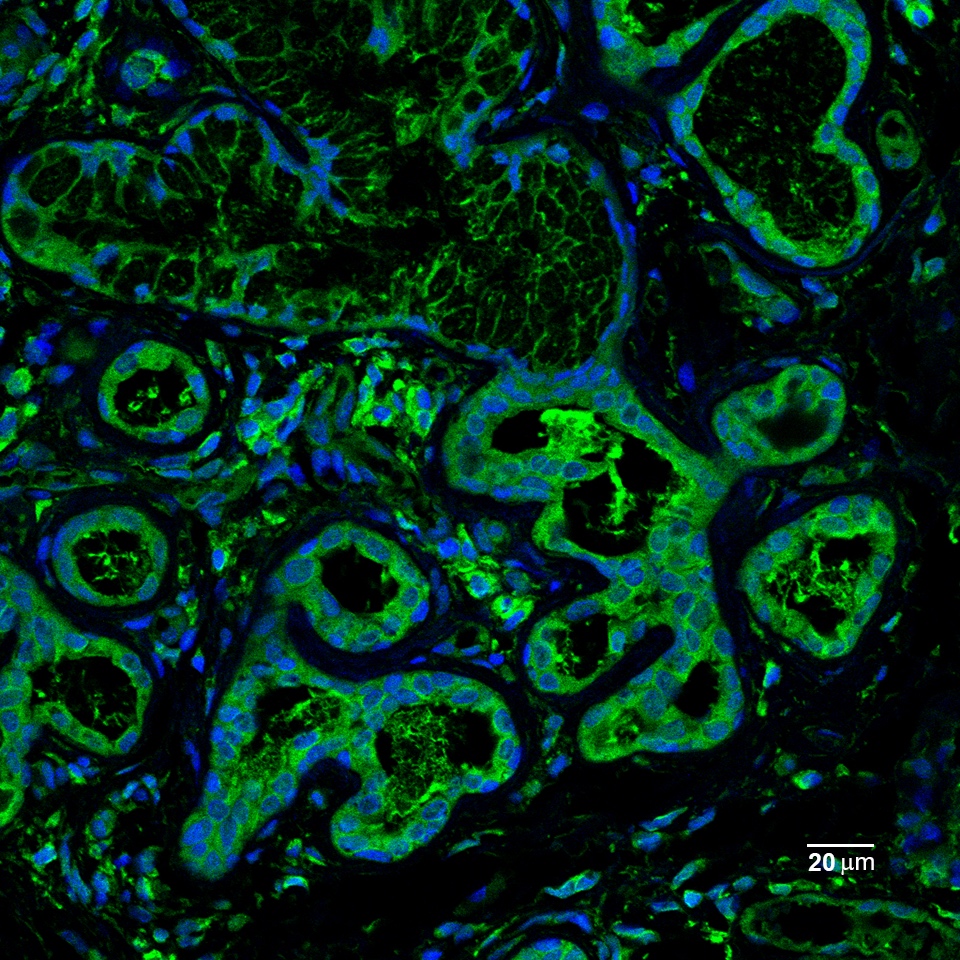Small molecules restore salivary function in mice. Researchers from the National Institute of Dental and Craniofacial Research (NIDCR) have found a promising way to restore saliva flow in mice with Sjögren’s-like symptoms. While it’s early days, this discovery could one day help people with Sjögren’s who struggle with dry mouth and inflammation.
In Brief
- Using chemical compounds that target cell signaling, NIDCR researchers restored salivation in mouse models of Sjögren’s Disease, a disorder in which the body’s immune response impairs salivary gland function.
- The results suggest that this approach, which is based on chemical compounds called small-molecule inhibitors, could be explored for its therapeutic potential in some people with Sjögren’s.
Sjögren’s is an autoimmune disorder in which immune cells mistakenly attack and damage cells in the glands that produce tears and saliva. As a result, the glands become inflamed and produce less fluid, leading to symptoms of dryness in the eyes and mouth. For people with the condition, dry mouth affects taste, makes chewing and swallowing more difficult, and increases the risk for cavities, tooth loss, and oral infections. Sjögren’s affects 2 million to 4 million people in the United States, most of them women.
NIDCR scientists report in a recent study that they could restore salivary gland function and reduce inflammation in animal models of Sjögren’s by interfering with the activity of a protein called bone morphogenetic protein 6 (BMP6). The findings point to BMP6 as one possible driver of salivary gland dysfunction in Sjögren’s syndrome and suggest it might be explored as a therapeutic target in patients.
In the new study, John Chiorini, PhD, and first author Hongen Yin, MD, PhD, and their colleagues evaluated salivary gland tissue from 79 female patients with Sjögren’s and found that more than half of them had elevated levels of BMP6 protein in their salivary glands. BMP6 is a signaling molecule that triggers production of proteins involved in a wide range of processes, including bone growth, iron regulation, ovulation, and immunity. In patients with elevated salivary gland BMP6, higher levels of the protein were correlated with lower rates of saliva flow and, marginally, increased inflammation. These findings—along with earlier reports that overproduction of BMP6 in mice led to Sjögren’s-like symptoms—suggested that BMP6 is associated with Sjögren’s syndrome development, says Yin.
What Did the Study Find?
Scientists looked at a protein called BMP6, which was found in high levels in the salivary glands of many women with Sjögren’s. BMP6 seems to interfere with how saliva is made and may contribute to inflammation.
Here’s what they discovered:
BMP6 blocks water flow in salivary gland cells, making it harder to produce saliva.
When researchers added special chemicals (called small-molecule inhibitors) that block BMP6, saliva flow improved in mice.
In one mouse model, inflammation also went down after treatment.
A key water channel protein called AQP5 increased after treatment—this protein helps move water across cell membranes, which is essential for saliva production.
Why Does This Matter?
This research suggests that BMP6 might be one of the reasons salivary glands stop working properly in some people with Sjögren’s. Blocking BMP6 could be a future treatment option—but only for those who have high levels of this protein.
What’s Next?
Because Sjögren’s affects people differently, future treatments will likely need to be personalized. This study is a step toward understanding one possible cause—and one possible solution.
“Therapies will have to be based on personalized medicine and understanding of the individual’s disease.” — Dr. John Chiorini, lead researcher
Reference
Inhibition of bone morphogenetic protein 6 receptors ameliorates Sjögren’s syndrome in mice. Yin H, Kalra L, Lai Z, Guimaro MC, Aber L, Warner BM, Michael D, Zhang N, Cabrera-Perez J, Karim A, Swaim WD, Afione S, Voigt A, Nguyen CQ, Yu PB, Bloch DB, Chiorini JA. Sci Rep. 2020 Feb 19;10(1):2967. doi: 10.1038/s41598-020-59443-z. PMID: 32076051.
SOURCE: NIH’s National Institute of Dental and Craniofacial Research

Comments
Post a Comment